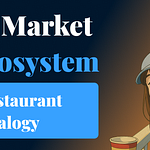TL;DR: Key takeaways
A custom GPT is like a trained chef—it adapts to your brand's unique style and voice.
Marketing teams consist of diverse talents, but brand messaging must stay unified.
Consistency in tone builds trust and recognition across all marketing channels.
A brand-trained GPT helps scale content without sacrificing quality or coherence.
Success depends on clear brand voice documentation, structured prompts, and continuous refinement.
The power of a brand custom GPT: A chef analogy
Imagine you're opening a high-end restaurant. You could hire any skilled chef, but for your restaurant to stand out, they need to master your signature style—the plating, the flavors, the artistic presentation. Even a Michelin-starred chef must adapt to your restaurant’s unique identity.
Now, replace the chef with a custom GPT and the restaurant's secret recipes with your brand guidelines. You don’t just need generic, automated content—you need a system that understands your brand’s voice, messaging, and values. The goal? Scalable, high-quality content that perfectly aligns with your brand’s voice and tone, ensuring a consistent and cohesive message across all channels.
Why marketing teams need a brand custom GPT
Marketing teams are made up of diverse talents—social media managers, PR specialists, content writers, and designers—each with their own approach to communication. However, without a unified brand voice, marketing efforts can feel scattered, as if created by different companies rather than a single, cohesive brand.
Think about some of the world’s most recognizable brands—Apple, Nike, or Coca-Cola. Their messaging is instantly recognizable, whether in a tweet, an ad, or a blog post. This level of consistency isn’t accidental. It comes from clear brand guidelines, disciplined execution, and now, increasingly, AI-driven tools trained specifically for their brand voice.
A custom GPT allows marketing teams to:
Maintain a consistent voice across all content.
Scale content production without losing quality.
Save time while ensuring every message aligns with brand identity.
Personalize messaging for different audience segments while keeping a unified tone.
How to build a brand-specific custom GPT
Bringing a custom GPT into your marketing workflow requires thoughtful implementation. Here’s a step-by-step guide to making it work.
1. Define your brand’s voice and tone
Before training your custom GPT, you need to document your brand’s voice and tone clearly. Think of this as your brand’s recipe book—without it, your GPT won’t know how to create content that fits your brand.
Brand Values: Identify the core principles that define your brand’s mission and purpose.
Brand Archetype: Determine the personality your brand embodies (e.g., The Hero, The Explorer, The Sage).
Target Audience: Clearly define who you are speaking to, including demographics, preferences, and pain points.
Voice: Is your brand authoritative, playful, professional, or friendly?
Tone: Does your messaging lean more inspirational, conversational, or data-driven?
Examples: Gather past content that represents your ideal brand voice.
Do’s and Don’ts: Specify key phrases, stylistic choices, and words to avoid.
Need a structured way to document your brand voice? Access our free prompt instruction template here.
2. Train your GPT with structured inputs
Once you have a well-documented brand guide, your next step is feeding your GPT the right instructions. Think of it as giving a chef step-by-step directions for a signature dish.
Combine instructions.
Incorporate extra knowledge and context.
Utilize a mix of skills.
Want to streamline this process? Download our prompt instruction template to get started.
3. Test, refine, and optimize
Just like onboarding a new team member, your custom GPT needs some fine-tuning before it’s fully aligned with your brand.
Run test content generations and compare them to brand-approved materials.
Refine outputs by adjusting prompts and examples based on real-world performance.
Gather feedback from the creative team to identify areas for improvement.
Iterate regularly to update training data with fresh, relevant content.
The future of technology-driven marketing
A custom GPT is an extension of your marketing team. When properly trained, it helps scale content production, ensures brand consistency, and saves time without sacrificing quality.
The future of marketing isn’t about replacing human creativity with AI—it’s about using technology to enhance and support human creativity. Think of it as having a highly trained sous-chef in your marketing kitchen, ensuring every piece of content meets the highest standards.
Ready to build your own custom GPT?
Download our prompt instruction template to get started.
Start by defining your brand voice, structuring effective prompts, and continuously refining the output. The result? A marketing team that moves faster, stays consistent and engages audiences like never before.
What’s your biggest challenge with maintaining brand voice across content? Let’s discuss this in the comments!
If this article helped you take the next step in your AI journey, share it with a friend or colleague who might find it useful!













Share this post